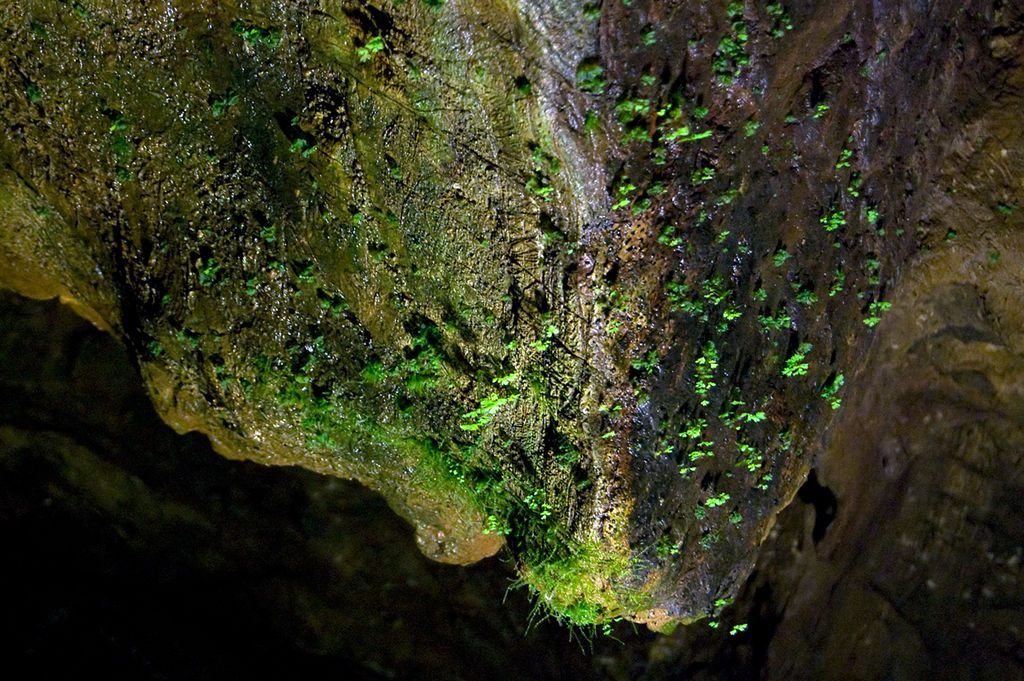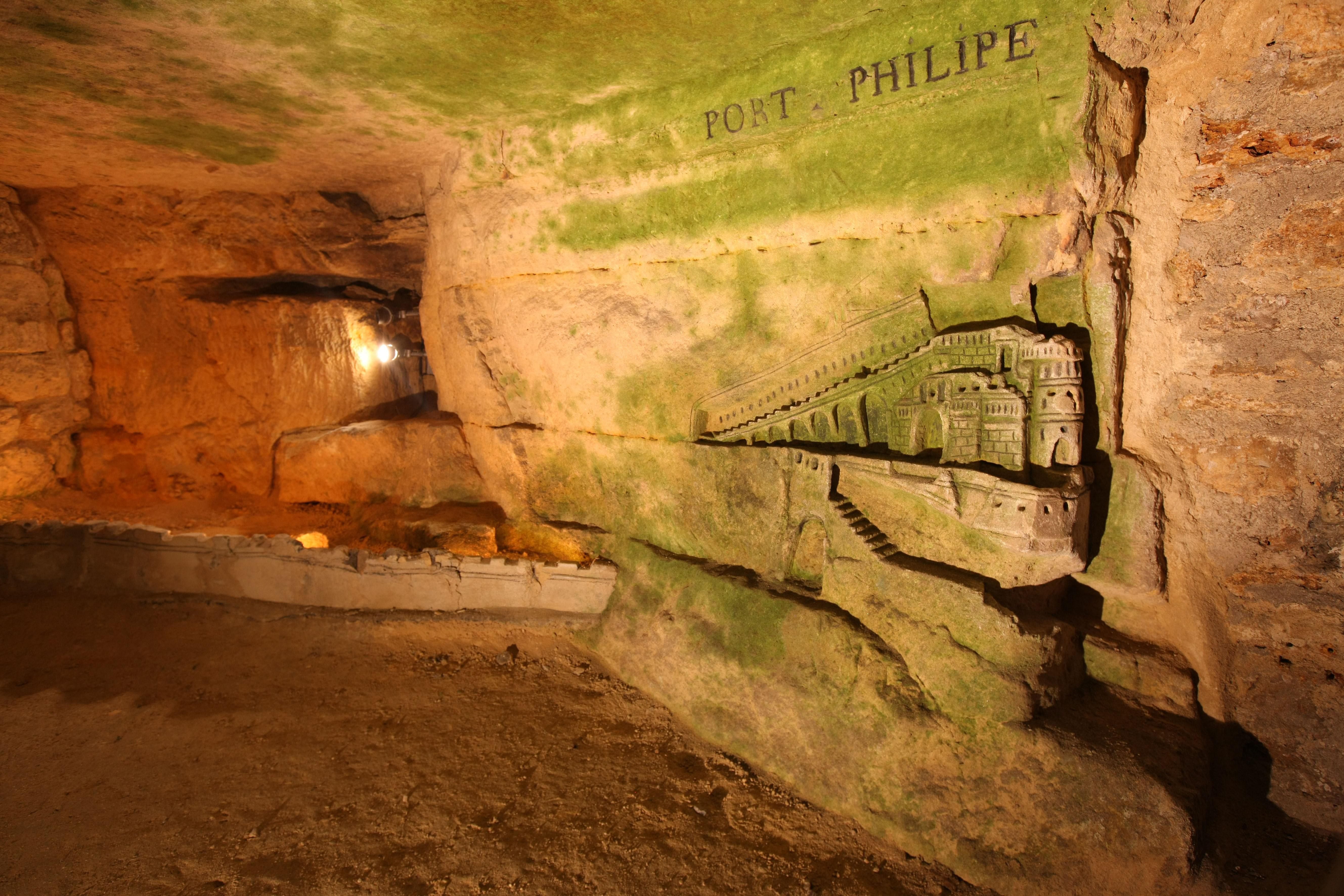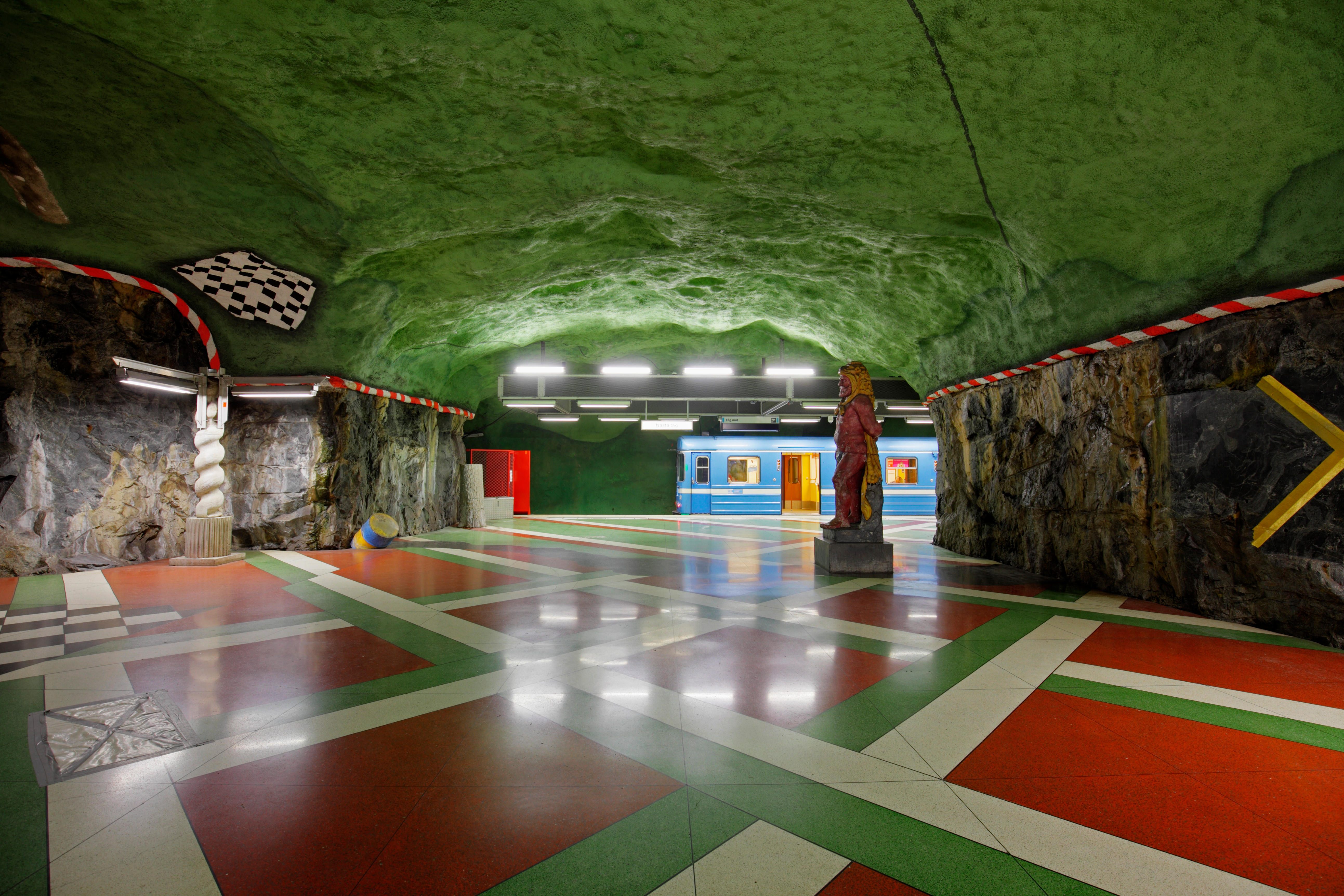The Green Slime That Flourishes in Light-Filled Caves
Where there is light, organisms will follow.

If a dark space beneath the earth contains something wondrous, be it a collection of Paleolithic paintings, a stunning display of stalactites, or simply a bunch of neatly stacked human bones, people will want to take a look. Opening such a space to the public often requires installing artificial lighting in previously unlit spaces. Unfortunately, a newly incandescent or fluorescent glow can awaken a little green menace.
The native residents of deep, dark places—which include pale and eyeless species of arachnids, insects, crustaceans, fish, and amphibians adapted to a life without light—survive on a limited supply of food brought in from the surface or produced by specialized bacteria and archaea. Introducing a new source of energy—light—can cause big changes to these environments by creating conditions friendly to photosynthetic organisms that couldn’t previously survive there. When these find their way in via air, water, animals, or humans, it’s easy for them to set up shop on illuminated surfaces.

The group of light-dependent newcomers are known as lamp flora (from the German lampenflora). Young lamp flora typically consists of microscopic algae and cyanobacteria, which collectively form a greenish slime on surfaces illuminated by fake sunlight. With time, mosses and ferns can join the subterranean party. A flowering plant or two may even put in an appearance.
The arrival of lamp flora in newly lit underground environments can threaten the livelihoods of the original darkness-dwellers. The latter are adept at dealing with food scarcity, and often slow down growth and reproduction in turn. Lamp flora, on the other hand, can grow rapidly in the presence of light. Organisms that like to munch on lamp flora may show up, establishing a new ecosystem. The darkness-adapted community isn’t able to keep up, and can eventually go extinct.

In addition to disrupting the local ecosystem, lamp flora tends to spoil the very environment that lights were installed to illuminate. No one wants a prehistoric hand painting or nifty cave crystal to sprout green fuzz, but it’s more than a matter of aesthetics. As lamp flora grows, it leaks organic acids. Although the acids aren’t particularly strong, they can put caves (and their cool formations) at risk because these spaces are often made of limestone and other carbonate-rich rocks susceptible to dissolving. If lamp flora becomes encased in a cave’s carbonate minerals, the organisms can leave their pigments behind as a permanent green stain.
The most straightforward way to get rid of lamp flora is to remove the artificial lighting. This isn’t always a popular solution, since it would likely mean closing a cave to visitors. Another option is to brush or scrape off the green gunk, but this can spread it to other lit areas and potentially damage the surface being cleaned.

Chemicals can also be used to combat lamp flora. The famous Lascaux Cave in southwestern France was permanently closed in 1963 due in part to la maladie verte—a green biofilm that grew on the hundreds of Paleolithic wall paintings after lighting was installed. To deal with this issue, workers sprayed the cave walls with a potent combination of antibiotics and formaldehyde. (A simple solution of household bleach is another way to destroy unwanted slime.) The high-octane treatment managed to fend off the green stuff, but the cave has nevertheless remained off-limits to tourists in order to minimize further damage to the artwork. A replica, known as Lascaux II, has been constructed for the public to visit.
Even when chemicals are effective, though, they can damage the surfaces on which lamp flora grows and kill off native microbes hanging out nearby. Chemical treatments might not be permanent, either: Lamp flora can hide out inside small holes in the rock, ready to grow back.
Perhaps the most promising way to control lamp flora while still allowing visitors to access underground spaces is to reduce light without eliminating it entirely. According to Slovenian researchers, this can be accomplished by some combination of switching off the lights after visiting hours, dimming lights whenever they’re on, placing lamps far from important features, and using LEDs that emit light only at wavelengths that lamp flora can’t easily use. A big advantage of the light-based approach is that it doesn’t cause any collateral damage—and it’s shown some positive results. In a section of Kentucky’s Mammoth Cave, swapping in growth-inhibiting LEDs, which emit only yellow light of a single wavelength, eliminated the existing lamp flora within a year. Even so, these lights might not be a permanent solution, since cyanobacteria can adapt to changing light conditions by upping their production of different pigments to absorb whichever wavelengths are available.

For all the work being done to get rid of it, the appearance of lamp flora isn’t always bad news for an subterranean space. The Kungsträdgården subway station in Stockholm is home to a cherished section of underground greenery. When the station was carved out of billion-year-old granite, some sections of the rock were intentionally left exposed. On one wall, the presence of artificial light led to the growth of a vibrant ecosystem consisting of lamp flora, tiny springtails and copepods that munch on lamp flora, and a small cave spider that hunts the flora-eaters. This particular spider is not known to be found anywhere else in Sweden, and may have journeyed in on the equipment used to construct the station back in the 1970s. Considering its unique contributions to Kungsträdgården station, there’s at least one place where lamp flora has earned its time in the spotlight.



















Follow us on Twitter to get the latest on the world's hidden wonders.
Like us on Facebook to get the latest on the world's hidden wonders.
Follow us on Twitter Like us on Facebook